
Buying Plastic Bottles? Here’s What You Need to Know About BPA
Looking to find the perfect plastic bottle? As you can imagine, there are multiple factors that contribute to the function and aesthetic you want to convey—feel, grip, size, color. Appeal and performance aren’t the only components in deciding which container is the ideal choice for your product packaging. Consumers take many considerations into account when deciding which products are right for them on the shelves. One question in this deliberation might be: does it contain BPA?
We’re here to help you identify what BPA is, determine which specific plastic types may have BPA and assist you with deciding the best container for your product!
What is BPA?
BPA, short for Bisphenol A, is an organic synthetic compound used to manufacture polycarbonate to harden certain plastics such as sports water bottles, baby bottles, sippy cups, baby pacifiers, water pipes, and dental sealants. BPA is also used to create epoxy resins acting as a liner for metal products. (see Understanding the History of Bisphenol A).
While the Food and Drug Administration has stated in the past that BPA is safe at the current levels occurring in foods, many consumers may want to avoid this adhesive in their food packaging.
How to Identify if a Plastic Bottle or Container is BPA Free
There are many plastic bottles that do not contain BPA, but how can you tell when you’re at the store? Here are some simple ways to differentiate between bottles that may contain BPA and ones that do not:
- Look at the bottom of the plastic and identify what recycling code is used. This will be a number 1 from 7 within a triangle of arrows.
- If a bottle, jar, jug or container is labeled as a 1, 2, 4, 5, or 6 plastic type, we can safely assume it does not contain BPA even without a BPA-free symbol.
- Even though not all plastic type 3’s and 7’s contain BPA, unless marked BPA free, it most likely contains this additive. It is important to note that BPA-free plastics do not automatically make them FDA approved for food products.
If you wish to clearly recognize BPA-free bottles, reputable manufacturers and suppliers will provide this information for you on their website. You can find this information about our products on the product page.
Plastics that Commonly Contain BPA
Vinyl and polyvinyl chloride may contain BPA. PVC is a thermoplastic and can withstand harsh impacts as well as extreme temperatures. This means when the temperature changes, its physical properties change as well. PVC can be rigid or flexible making it an excellent choice for a multitude of applications. Because BPA is used to harden plastics, it can be commonly used to manufacture this plastic type.
Common applications that PVC bottles carry are industrial and household chemicals, health and beauty (lotions, shampoos) and foods (marinades, dressings, oils and hot sauces).
Other, also known as Type 7 is referred to as a bioplastic because it’s a combination of various plastic types such as polylactic acid, acrylic, polycarbonate, nylon, and more. BPA can be used to manufacture polycarbonates (PC) which is a major plastic in this type.
Although PC is often made with BPA, it is possible to be created without it. These products will be clearly labeled BPA free on the bottom of the bottle. For an example, this sports bottle is made of Plastic 7 but does not contain BPA.
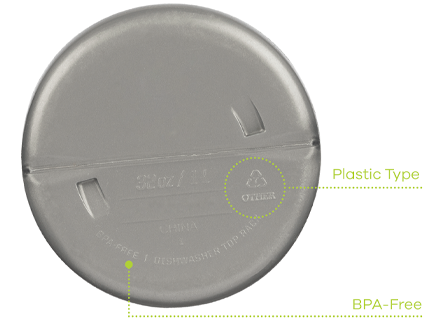
Understanding the History of Bisphenol A
In 1891, a Russian chemist named Aleksandr Dianin created a compound called Bisphenol A (BPA). This organic synthetic compound was not integrated in the U.S. until Edward Charles Dodd used BPA to produce an artificial estrogen hormone called diethylstilbestrol (DES).
In the 1950s, DeVoe Raynolds found epoxy resins (a strong type of glue) in BPA and began to use it for industrial strength coatings and adhesives. What started as an adhesive for electrical and electronic applications, BPA was gradually used in plastics as an additive to create denser plastics like water bottles, baby bottles, food containers, as well as linings for metal cans to remove aluminum taste.
According to National Toxicology Program of NIH in the early 2000’s surveys were conducted to determine the amount of exposure people in the U.S. had to BPA. The studies have shown that the amount was high for each individual—ages ranging from six years and older.
In 2012, the FDA banned the use of this additive in baby bottles and sippy cups across the nation because infants and children are more susceptible to the effects of BPA. However, the organization has stated the current levels of BPA in other bottles and packaging are low enough to not pose a threat to our health.
If you have any questions, contact us at 630.629.6600 or check out our online selection!
View Our Plastic Selection:

Plastic
Packer Bottles
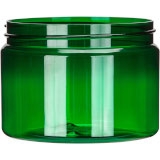
Straight Sided Plastic Jars
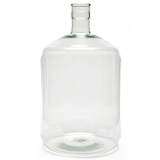
Plastic Carboys and Jugs

Plastic
Drinking Bottles
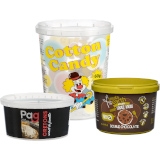
Plastic
Tubs and Containers
BPA is an industrial chemical used in the production of certain plastic types, appearing in plastic products from bottles to pipes. It is used to harden plastic and improve durability, but in recent years BPA has also been identified for its negative effects on health. Food and infant care industries have either ceased or drastically decreased use of BPA in products.
With growing safety concerns, consumers have expressed a desire for BPA free packaging, especially with regards to products that contact food. What is the meaning of BPA free, and when is using BPA free packaging necessary? We’re here to help you identify which specific plastic types may have BPA and assist you in deciding the best container for your application!


What Is BPA?
BPA, or Bisphenol A in its full form, is an organic synthetic compound used to manufacture polycarbonate and epoxy resins used to coat the insides of metal products. It hardens plastic products such as sports water bottles, baby bottles, sippy cups, baby pacifiers, water pipes, and dental sealants. (see Understanding the History of Bisphenol A).
Amid questions about the potential effects of BPA leaching, consumers are increasingly opting for BPA free packaging, particularly for food and infant-related products.
What Is BPA Free Plastic?
BPA free plastic does not contain BPA, either because the additive was substituted with an alternative or because BPA never occurred in the plastic type. It is important to note that BPA-free plastics are not automatically FDA approved for food products.
How to Tell If a Plastic Product Is BPA Free
Consumer demand for BPA free packaging has urged many companies to include “BPA free” disclaimers on products, even if the risk never existed for said plastic type.
Here are some simple ways to differentiate between bottles that may contain BPA and ones that do not:
-
Look at the bottom of the plastic and identify what recycling code is used. This will be a number 1 from 7 within a triangle. If a bottle, jar, jug or container is labeled as a 1, 2, 4, 5, or 6 plastic type, we can safely assume it does not contain BPA even without a BPA-free symbol.
-
If the product is made of plastic type 3 or 7, look for a “BPA free” disclaimer. These codes do not indicate the presence of BPA, but are the plastic types that require further investigation.
If you wish to clearly recognize BPA-free bottles, reputable manufacturers and suppliers will provide this information for you on their website. You can find this information about our products on the product page.


What Is the Symbol for BPA Free?
While there is no standardized BPA free symbol, its design has some recurring elements. Commonly, the symbol for BPA free packaging is a black or green icon with one or more leaves and the words “BPA Free”. Some products may not use a symbol at all, but specify with words.
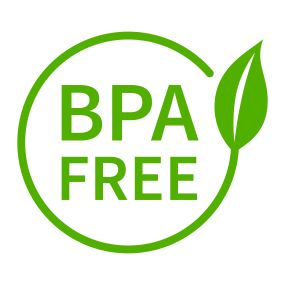

History of Bisphenol A (BPA)
In 1891, a Russian chemist named Aleksandr Dianin created a compound called Bisphenol A (BPA). This organic synthetic compound was not integrated in the U.S. until Edward Charles Dodd used BPA to produce an artificial estrogen hormone called diethylstilbestrol (DES).
In the 1950s, DeVoe Raynolds found epoxy resins (a strong type of glue) in BPA and began to use it for industrial strength coatings and adhesives. What started as an adhesive for electrical and electronic applications, BPA was gradually used in plastics as an additive to create denser plastics like water bottles, baby bottles, food containers, as well as linings for metal cans to remove aluminum taste.
According to National Toxicology Program of NIH in the early 2000’s surveys were conducted to determine the amount of exposure people in the U.S. had to BPA. The studies have shown that the amount was high for each individual—ages ranging from six years and older.
In 2008, the FDA stated the current levels of BPA in other bottles and packaging are low enough to not pose a threat to our health. They have yet to amend their position in 2025.
In 2012, the FDA removed its authorization for BPA in baby bottles, sippy cups, and infant formula packaging. This decision was made based on abandonment, not safety, meaning the FDA acknowledged BPA additives were permanently discontinued in the industry.
Shop BPA Free Packaging at Cary!
Looking to find the perfect plastic bottle? As you can imagine, there are multiple factors that contribute to the function and aesthetic you want to convey—feel, grip, size, color. Appeal and performance aren’t the only components in deciding which container is the ideal choice for your product packaging. Consumers take many considerations into account when deciding which products are right for them on the shelves.
If you have any questions, contact us at 630.629.6600 or check out our online selection!










